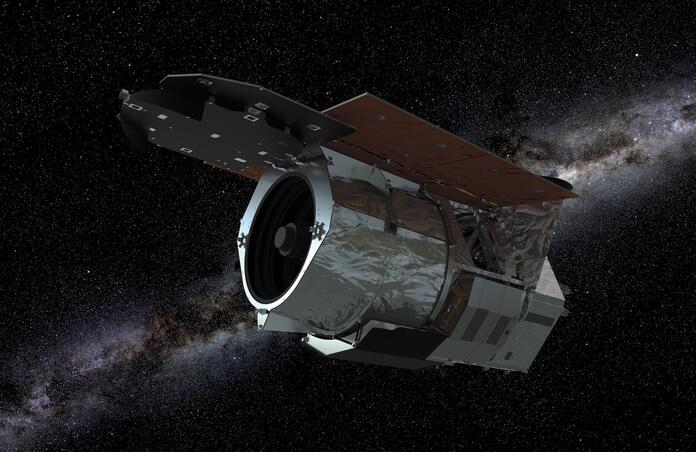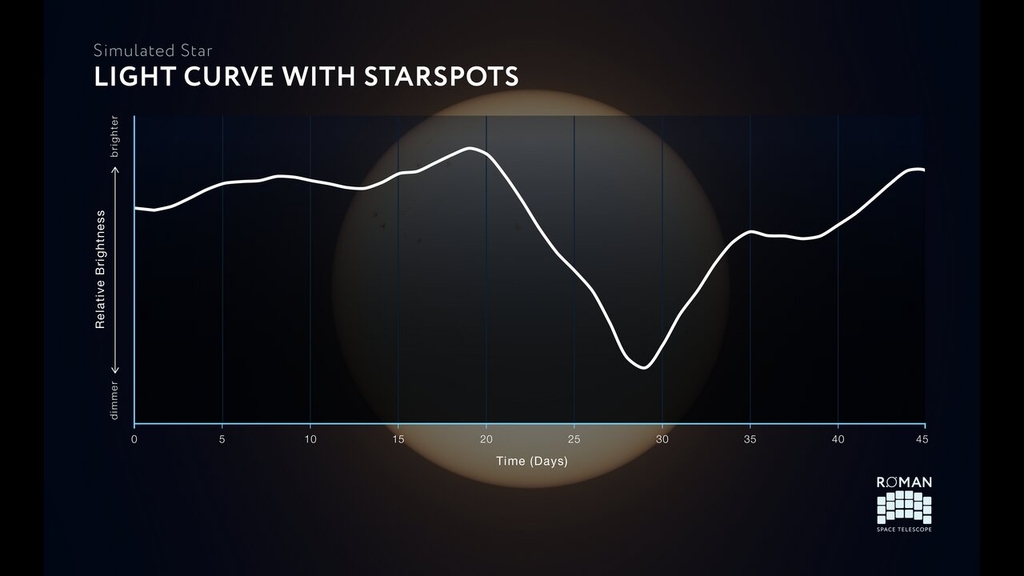NASA's Roman Telescope plans to measure stellar ages

One of the biggest challenges in astrophysics is accurately determining the ages of stars. This is because once a star has begun steady nuclear fusion on the main sequence, it varies by very little for billions of years. However, one exception to this is the stars rotation.
When stars are newly born, they spin rapidly. In the next billions of years which follow, solar-like stars will gradually slowdown in their rotation. The sun rotates around once a month at 4.5 billion years old. Such a decrease in rotation rate is caused by interactions between a stream of charged particles called the stellar wind and the stars magnetic field. The interactions reduce the stars angular momentum causing the decrease in stellar spin. This effect, known as magnetic braking, depends on the strength of the stellar magnetic field. For example, rapidly rotating stars have stronger magnetic fields, causing them to slow down at a faster rate.
Due to such magnetic fields, after around one billion years stars of the same mass and age will spin at the same rate. Therefore, if the stars mass and rotation rate are known, their age can be estimated. NASA’s Nancy Grace Roman Space Telescope aims to measure the rotation rate for hundreds of thousands of stars, which will aid our understanding in stellar populations within the milky way following its launch by May 2027. From studying these stellar populations, we can find out more about how our galaxy formed and its subsequent evolution.

To measure the stellar rotation rate, astronomers look for changes in stellar brightness due to starspots. These are cooler, darker patches on the surface of the star. When the spot is in view, the star will appear dimmer than when the spot is outside of view. Therefore, if the star has one large spot a periodic signal will arise whereby a regular pattern of dimming and brightening will be seen. However, stars can possess many spots across their surface which vary over time, making it much more difficult to find such periodic signals.

A team of astronomers at the University of Florida are developing new methods of extracting rotation periods from measurements of stellar brightness over time. The technique involves using a convolutional neural network to analyse light curves. First, the neural network was trained on simulated light curves, generated by a program called ‘butterpy’ which was written by Zachary Claytor, University of Florida postdoctoral associate and science principal investigator on the project.
"This program lets the user set a number of variables, like the star's rotation rate, the number of spots, and spot lifetimes. Then it will calculate how spots emerge, evolve, and decay as the star rotates and convert that spot evolution to a light curve—what we would measure from a distance," explained Claytor.
The team have already applied their trained neural network to NASA TESS data. Systematic effects can add a difficulty when trying to accurately measure longer stellar rotation periods, however, the neutral network was able to measure these longer rotation periods using TESS data.
The Roman Space Telescope will collect data from hundreds of millions of stars through its galactic bulge time domain survey, comprising one of three core community surveys set to be carried out. The telescope will look into our galaxy’s centre to monitor how these stars change in brightness over time. Such measurements will be used in multiple investigations including the search for distant exoplanets.
"We can test which things matter and what we can pull out of the Roman data depending on different survey strategies. So when we actually get the data, we'll already have a plan," said Jamie Tayar, assistant professor of astronomy at the University of Florida and the program's principal investigator.
--
Cover image: Stanford University/KIPAC
